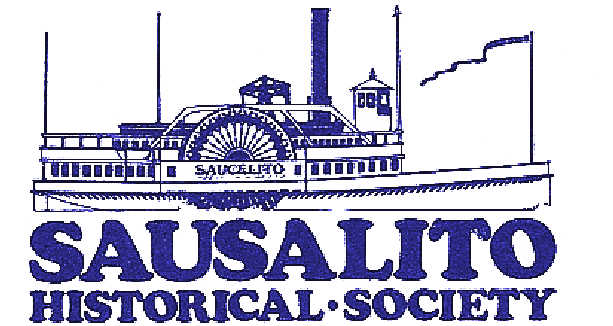By Steefenie Wicks - The Sausalito Historical Society
Sausalito’s waterfront history is rich with the different types of people who have come here and made it their home or place of business. Most of these transplants themselves have a connected background of being on the water, sailing or rowing and doing so at early age.
Courtesy of Steefenie Wicks/Sausalito Historical Society
This is the background that fits Shirwin Smith, who learned her rowing skills when she was 8 years old on Lake Champlain in Vermont. In 1973, her life encountered a change that would bring her to California.
“My first job was for the GGNRA [Golden Gate National Recreation Area] in San Francisco at the Maritime Museum,” Smith said. “It was while I was working there that I moved to Sausalito in 1979.
“One day while reading the Marinscope, I saw an ad about the forming of a new Sausalito Rowing Club. I remember thinking, ‘That’s for me.’”
Smith remembers the club’s first meeting, led by Gordy Nash, was attended by five people at City Hall.
Nash was a builder of small craft and quite well-known in Sausalito. It was through Nash that Smith started to become serious about the idea of rowing and sculling. She remembers a story of how she was part of a race Nash put together from Catalina Island to Marina Del Ray, a 36-mile event. The rowing shells would be taken out on a larger vessel. Participants then boarded their vessels and raced back. She wound up participating in the event on five separate occasions.
In 1985, Smith quit her job with GGNRA and started her own business, Open Water Rowing Center, which is now a 30-year-old waterfront firm dedicated to the art of sculling.
She is the first to tell you what she does is like the “mountain bike” of rowing – a sport very different from kayaking or paddle boarding. She was the first to open a particular type of water sculling, which uses a form of rowing shell that only weighs about 38 pounds and travels quickly over the water’s surface.
Smith said the business was quite different back in 1985.
“I never felt that I was treated differently because I was a woman,” she remembered. “For me, it was more like shock factor when people would find out that the owner was the ‘little gal’ over there.
“It is always the same, no matter who I’m standing with and talking to. Someone will eventually come up and say, ‘Hey, do you know how I can find the owner.’ And I would speak up and say, ‘That would be me.’”
Smith feels when you get about a quarter-mile offshore, the world seems to change. And you change with it.
She tells stories of only pleasant encounters with other waterfront dwellers who anchor out on their vessels. She also tells of how many have gone out of their way to return boats to her when they have gotten lost in a storm.
“All waterfront areas are different,” she said. “But the thing that makes Sausalito so special is the atmosphere created by this incredible body of water that surrounds us, takes us to another world of experience, then lets us row back to shore.
“My grandfather was a rower. He was with the Harlem River Rowing Club that was founded by returning civil war veterans back in 1873. I never got to meet him, but my grandmother gave me all the medals he had won. Maybe I get my talent for this sport from him; I have wondered about that.”
I asked Smith about her early days in the Onshore Marine building, which was demolished to make way for the contruction of the Schoonmaker marina.
“Oh, those were the days,” she recalled. “There were all of thess local waterfront business that all seemed to fit together in that space. We shared the space and became a small, supportive community for each other.
“I can remember one night I was on my way home, and one of the fishermen had come in, tied his boat up and he, along with some of the guys from the building, were out grilling fish from his catch. As I walked by, I commented on how good it looked. He told me to stick out my hand; in it he handed me a nice filet that I had that night for dinner.”
Smith feels the laid back attitude is part of being on the water and being part of that close water existence. She mentioned one of her mentors on the waterfront has long been Hank Easom; she admires him as a business owner, a person of character and an awesome sailor.
When Easom closed down his boat shop, he offered her space for her shells on his property.
“[Easom] never seems to get upset,” Smith said. “He, instead, has this attitude of ‘let’s just get it fixed and move on.’ I like that.
“For the past 30 years, the Sausalito waterfront has been a wonderful place for me. When I’m offshore, moving along with the birds and the seals, this is another world. I feel that with this sport of sculling, you are taught to experience the bay in a most personal way. It’s a way of taking one’s first breath of Sausalito’s fresh air.”

